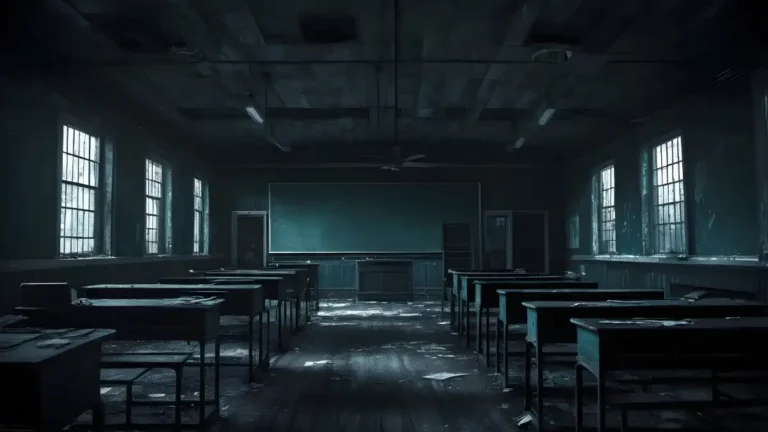The myth of quantity, the reality of resilience
Comrade Stalin once said it memorably: quantity is a quality of its own. The Soviet Union never really cared about making good stuff. Making a lot of stuff was the premise. Having lots of soldiers, lots of hardware, no matter how crude, was the foundation of Soviet military thought.
Watching China’s parades nowadays gives the same impression—that the old Soviet mentality never really died. It simply mutated and propagated across Eurasia. Since the Soviet Union ended up as one of the official victors of World War II, its approach still inspires a certain awe.
I grew up in the Cold War’s deep freeze, when horror stories of Soviet tank waves saturating Europe were as common as weather reports. The question wasn’t if the steel tide would roll but when it would hit Lisbon. NATO generals fretted over how to slow the avalanche long enough for American forces to arrive and start decimating the Red tide. Entire weapons systems were designed for no other reason than to blunt the wave of tanks. Does anyone not know the A-10 Thunderbolt—the “Warthog”—whose very existence was an ode to this terror?
The war in Ukraine was the first real test of that “volume wins” doctrine in decades. Fans of quantity were disappointed. Russia hurled its steel waves at a much smaller, poorly equipped neighbor and still failed to crush it, despite trying for years. Was the old fear of the Soviet flood overrated? And what does that mean for the immense arsenals China parades today? Are they less dangerous than we assumed?
The False God of Hardware
Shiny weapons are trophies for politicians and parades, but they are inert until embedded in doctrine, logistics, and culture.
That’s why China’s showpieces—aircraft carriers, nuclear triads, hypersonic missiles—matter less than they appear. They are as much theater for the home crowd as tools of war. Beijing needs distractions: the “China model” of Communist prosperity is faltering, its economic bubble showing dents. When prosperity cracks, nationalism fills the void. And nationalism craves hardware. Big nations need big toys to stoke big pride.
But hardware worship is a false religion. A carrier looks magnificent in photos, but the misery begins afterward—making the damn thing work. They cost tens of billions and demand decades of learning curves to operate effectively.
The U.S. did not invent carriers overnight. Its first, the USS Langley, was a coal ship converted in 1922—just four years after Britain’s HMS Argus. That modest beginning launched a century-long apprenticeship: multiple carrier generations, trial and error, victories and humiliations, all building the U.S. Navy’s institutional memory. From the Pacific theater against Japan to Cold War standoffs with the Soviets, the Americans accumulated scar tissue. Their latest Ford-class supercarriers are the culmination of a hundred years of naval know-how, won by burning time, money, and lives.
China, by contrast, has no maritime tradition. It builds carriers by copying, reverse-engineering, and improvising. But you cannot steal experience. Blueprints are cheap; doctrine is priceless. And doctrine is written in blood.
Operations as the Real Crucible
Wars are not won by prototypes or parades but by the endless grind of drills, failed exercises, and institutional scars.
Experience is cumulative. Each logistical screw-up, each humiliating defeat, each bloody nose becomes tacit knowledge you cannot buy.
This is where Ukraine has shown the world something remarkable. By conventional measures, Russia should have rolled it flat within days: larger, wealthier in stockpiles, overflowing with Soviet-era hardware. Yet it was not drones alone that hobbled the Russian bear—it was the hard-earned expertise Ukraine built between 2014 and 2022.
They rebuilt their armed forces from the ground up, creating a corps of people who could improvise, adapt, and transfer knowledge to the next generation. They paired cheap drones and refurbished tanks with ingenuity, battlefield cunning, and the iron will to learn fast through blood and pain. They dragged back every survivor they could—not just to fight again, but to teach.
The result: a million small scars forming a hardened body of knowledge.
When the war is over, this expertise will become Ukraine’s greatest export. Its veterans and instructors will flood into Western militaries, arms manufacturers, and security firms, commanding top dollar for their operational wisdom. Scar tissue sells. And Ukraine, though battered, will hold a competitive edge—its soldiers forged in the most brutal proving ground of our time.
Variables, Variables
Complex systems depend on a huge number of variables. Some can be copied, some can be guessed with the right kind of toolkit, some can be sniffed at and figured out—but some are hard to impossible to get right. And those variables need to be nailed with surgical precision, because a small thing can bring your precious machine down.
If the catapults don’t work, you are not flinging planes into the air. If the planes are the wrong kind, you’re pushing far below your weight. If your crews cannot rotate the planes fast enough, cannot fix them fast enough, cannot perform the choreography of takeoffs and landings optimally, your machine sputters. If supplies cannot be brought in on high seas, your machine needs to anchor. If the mess cannot rotate crews fast enough, people go hungry and discontent brews.
From the dance of airplanes to the dance of human feces through the drainage system of the ship, everything needs to work at all times: in harbor just as much as on extended deployments in rough seas, with enemy gear in the skies above and submarines below the waterline.
It’s worse than a chip production facility. Get the wrong kind of water, and your productivity crashes. You can copy blueprints and hire defectors for a lot of money, but you won’t get the myriad of small ingredients. You can get the spices right, you can maybe find out the sequence of how they are added to the stew, but sometimes the way the cook stirs it makes the difference.
The Brawn Problem
And here is where authoritarian states like Russia and China falter.
Authoritarian systems do not trust their people. They are terrified of delegating power downward, because delegation breeds initiative, and initiative threatens the throne. They know how they seized power, and they dread someone else doing the same to them.
The U.S. and its allies built a massive corps of non-commissioned officers (NCOs) precisely to fill the military’s belly with competence. These are the sergeants, the chiefs, the problem-solvers who keep the beast running when the generals are busy drawing arrows on maps. They anticipate problems, fix machines in unconventional ways, and improvise solutions that no blueprint could foresee. They are the military’s muscle and connective tissue.
China and Russia cannot replicate this. They hoard decision-making at the top, treating subordinates as obedient cogs rather than adaptive agents. The result is brittle systems—armies that look impressive until something goes wrong. Then they shatter like porcelain figurines: gleaming, expensive, and useless once dropped.
Ukraine exposed this brittleness. Russian commanders micromanaged from afar, distrusted their officers, and watched their grand plans collapse under the pressure of reality. The Russian bear had metal but no flesh to animate it.
Integration Hell
True strength lies not in the number of toys but in how seamlessly they interlock: air cover with naval strike, logistics with maneuver, communications with command.
Most militaries choke on this task. Even the U.S.—with all its resources—routinely trips over its own shoelaces. But it also has a century’s worth of practice at stumbling, recovering, and improving.
For China, this is where the gulf yawns widest. They can crank out hulls until the shipyards glow red-hot, but operations—the grinding art of turning toys into tools—lags decades behind. Teaching humans to operate in lockstep rather than like drunkards at a wedding reception is the real battle.
Hardware can be copied; operational choreography cannot.
The Pentagon’s Dragon Addiction
Here lies a paradox.
American generals need dragons. They need terrifying “peer competitors” to wave in front of Congress to secure the next few hundred billion. China serves this purpose beautifully: big, brash, authoritarian, and fond of parades.
The irony is that by inflating China’s military prowess, they mask how fragile it still is at the operational level. By selling Beijing as ten feet tall, they hide the fact that it still stumbles like a toddler on the battlefield stage.
The Pentagon thrives on fear, not peace. It withers without dragons. China, brittle as it may be today, is the perfect bogeyman—an endless wellspring of funding justification.
Inversions Don’t Come Because You Wish for Them
But what happens if the U.S. loses its edge in operational experience?
What if it stops fighting, or loses the institutional knack for metabolizing scars? Militaries harden through blood and humiliation. Without that, even mighty forces grow brittle.
China could, of course, develop this scar tissue as well. But for that to happen China would have to do what the U.S. did for many decades: fight the world’s wars and expect nothing back in return. The country wrestles with multiple internal problems right now, the economy being just one of them. The rampant corruption in the system means that whatever funds might be provided for such adventures would be pilfered away in no time, denying them the benefits.
Rome was unbeatable when it relied on its brawn. It was another great empire that rose and expanded into the most magnificent civilization of the ancient world through grit, systemic scar tissue, and muscle memory. It was grit and brawn that allowed it to pull through the horrible invasion of Hannibal, the countless civil wars, and a brutal standoff with the Parthians in the east—and prevail. But when Rome began outsourcing its battles to bought brawn, to mercenaries without loyalty, it began to rot and disintegrate.
The U.S. pulls back from world affairs and no longer wants to play global cop. Perversely, the very thing that made it strong and prosperous now becomes a liability in its eyes, and so it pares it back. Try to rely on bought muscle—it will work for a while, but the rot is already visible. Junk becomes more important, underwritten by brawn. But brawn needs constant replenishment and curation.
China is not the great adversary, but it is a scary one—and it allows U.S. generals to get money for their toys. That will work for another while, until another global adversary is necessary. Who will that be then?
The U.S. knows this instinctively. That’s why its real narcotic is not hardware, but operational supremacy—the cat with its catnip, purring over hard-won mastery while rivals chase the scent but not the substance.
Hardware dazzles. But flesh—scarred, hardened, adaptive flesh—is what wins wars.




